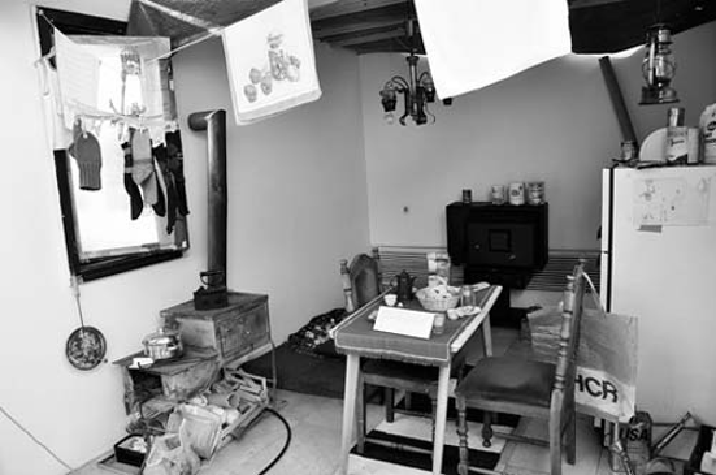Travel Reference
In-Depth Information
The mockup of a typical siege-time
apartment
shows how people were forced to make
do. The windows and roof are covered with a plastic tarp donated by the international com-
munity. The TV, telephone, refrigerator, and other appliances were useless without elec-
tricity. (The power might come on sporadically, but never for very long.) Look around at
the so-called “Sarajevo inventions,” created by desperate and clever people to keep going.
Notice the makeshift stove (a collection of several other, smaller stoves is nearby). During
the frigid Sarajevo winters, trees were cut down to fuel fires. When the trees were gone,
firewood was in short supply (a bundle might cost the equivalent of $50), so besieged res-
idents burned their furniture, shoes, old toys—anything flammable. And they bundled up in
as many clothes as possible. After 1994, natural gas was available in some areas; notice the
recycled IV tube (still bloody inside) used to power the gas lamp.

